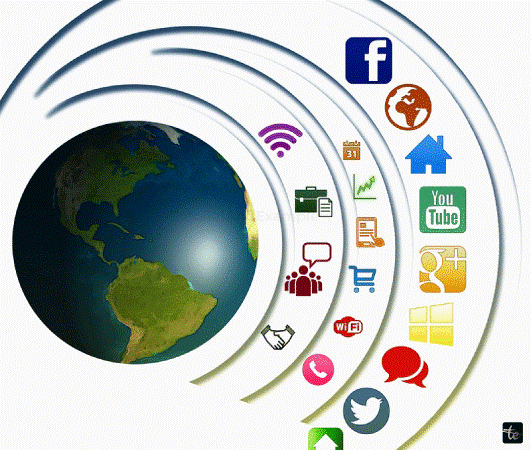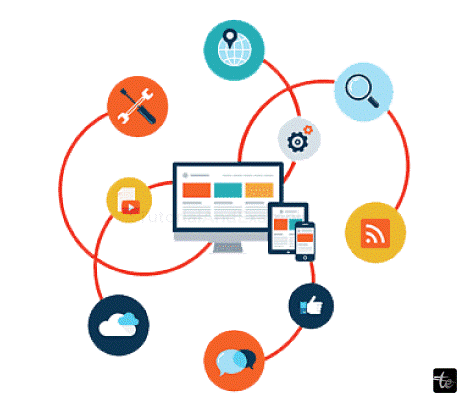Web Resources
Any recognizable digital, physical, or abstract resource accessible through or linked to the World Wide Web is called a web resource. Uniform Resource Identifiers (URIs) are used to identify resources. Semantic Online defines online resources and their semantic features using the Resource Description Framework (RDF). From the early idea of static addressable documents or files to a more general and abstract definition that now includes every "thing" or entity that can be identified, named, addressed, or handled in any way in the Web at large or any networked information system, the concept of a web resource has changed throughout the Web's history.

In the first Web standards, a resource's declarative components (name and identification) and functional components (addressing and technical processing) were distinct. Long-running and ongoing discussions on the concept's fundamental meaning have involved intricate and sometimes obscure technical, sociological, linguistic, and philosophical issues.
From documents and files to Web Resources
The term "resource" was hardly used in the initial Web standards (1990–1994). How the Web is constructed, files and documents are static addressable objects connected by URLs (Uniform Resource Locators). Identification is defined implicitly for web resources. Name and address are two distinct uses for this identification. The latter is contingent exclusively upon procedure. The idea of resource is not defined in any way in RFC 1630. In actual use, the phrase still refers to "objects of the network" and is seldom used outside URIs, URLs, and Uniform Resource Names. URLs are defined in further detail in RFC 1738 (December 1994), which replaces the word "Universal" with "Uniform". This article uses Resources more consistently to refer to "found and accessed" or "available" items online. Once more, the word "resource" must be explicitly defined.
From Web Resources to Abstract Resources
RFC 2396, published in August 1998, contains the first clear resource description. A resource is any object that has an ID. Collections of electronic papers, photos, services (like "Today's weather forecast for Los Angeles"), and other resources are typical examples. On the network, not all resources are "available". Resources might be individuals, businesses, or bound library volumes. A resource is not always the entity corresponding to the mapping at a given time but rather a conceptual mapping to an entity or group of entities. Therefore, even while the resource's content (the object it now relates to) changes over time; the resource can stay constant as long as the conceptual mapping remains the same throughout the process. This definition makes more abstract resources available, even if the examples in this article were still restricted to physical objects. Giving a concept a vision gives it an identity, and this identity is represented by a well-formed URI (Uniform Resource Identifier, a superset of the URL). The concept may also be a resource. RFC 3986 thoroughly specified this definition amendment in January 2005. A resource like an operator or operand in a calculation, a kind of relationship (like "parent" or "employee"), or a number (like 0, 1, infinite) is an example of an abstract idea.

Capabilities of Web Resources
Online resources include HTML files, JavaScript, CSS, and various image formats that may be utilised to expand the Dataverse online application. Because online resources may be accessed using URL syntax, you can utilise them in form modifications, the SiteMap, or the application ribbon.
Relative path references are supported in the URL syntax for online resources. Using your development tools, you can use file types that are compatible with web resources to construct a collection of interdependent files on a development server. When you upload all the files into Dataverse, the website will work if you follow a standard naming pattern and utilise relative path references.
Web resources are solution components stored in Dataverse, making exporting and installing them in other Dataverse organisations simple. Because they are synchronised with the user's data, web resources are also accessible to users of Dataverse for Microsoft Office Outlook with Offline Access.
Form-enabled online resources may be added to and configured within your forms using the form editor. Web resources may be handled programmatically by using conventional methods to create, retrieve, and update records since they are kept as records in the database. This program can edit and save text-based web resources (JScript, CSS, XML, XSL, RESX, and HTML).
Limitations of Web Resources
The ability of an ASP.NET (.aspx) page to execute code on the server is supported by no other kind of online resource. Only static files or files the browser processes can be used as web resources. The principle that the browser processes to perform web service calls and interact with Dataverse data may be present in a web resource.
The only way to access online resources is through the Dataverse web application security context. They are only accessible to authorised Dataverse users who possess the required rights.
Size limitations
The Organization sets the maximum file size that may be uploaded. The MaxUploadFileSize attribute. The Dynamics 365 application's Email tab in the System Settings contains the setting for this property. The amount of files that may be added to emails, notes, and online resources is restricted by this option. 5 MB is the default value.
Resources in RDF and the Semantic Web
When RDF was initially launched in 1999, its primary goal was to characterize resources to define resource metadata uniformly. A resource's RDF description is composed of triples (subject, predicate, object), where the item might be data or another resource, the problem is the help being described, and the predicate is the kind of attribute connected to the resource. Elevate. A URI is used to identify the predicate itself as a resource. As a result, characteristics like "author" and "title" are represented as resources in RDF and may be utilised recursively as the subject of other triples. RDF vocabularies, such as RDF Schema (RDFS), Web Ontology Language (OWL), and Simple Knowledge Organisation Systems, are based on this recursion principle and stack descriptions of abstract resources, like classes, properties, and ideas, all of which are recognised by URIs. RDF also explains Anonymous resources or empty nodes that a URI does not fully recognise.
Types of Web Resources
Web resources may be created using 10 different file types. The file formats, permitted file extensions, and type values you can use for each are listed in the following table.
| File | File extensions | Type |
| Webpage (HTML) | .htm, .html | 1 |
| Style Sheet (CSS) | .css | 2 |
| Script (JScript) | .js | 3 |
| Data (XML) | .xml | 4 |
| Image (PNG) | .png | 5 |
| Image (JPG) | .jpg | 6 |
| Image (GIF) | .gif | 7 |
| Silverlight (XAP) | .xap | 8 |
| StyleSheet (XSL) | .xsl, .xslt | 9 |
| Image (ICO) | .ico | 10 |
| Vector format (SVG) | .svg | 11 |
| String (RESX) | .resx | 12 |
Conclusion
In conclusion, web browsers may retrieve and display online resources when a user sees a webpage. These resources are usually housed on web servers. These resources are essential to the operation and appearance of webpages and web apps and are crucial to sharing and consuming information on the Internet.